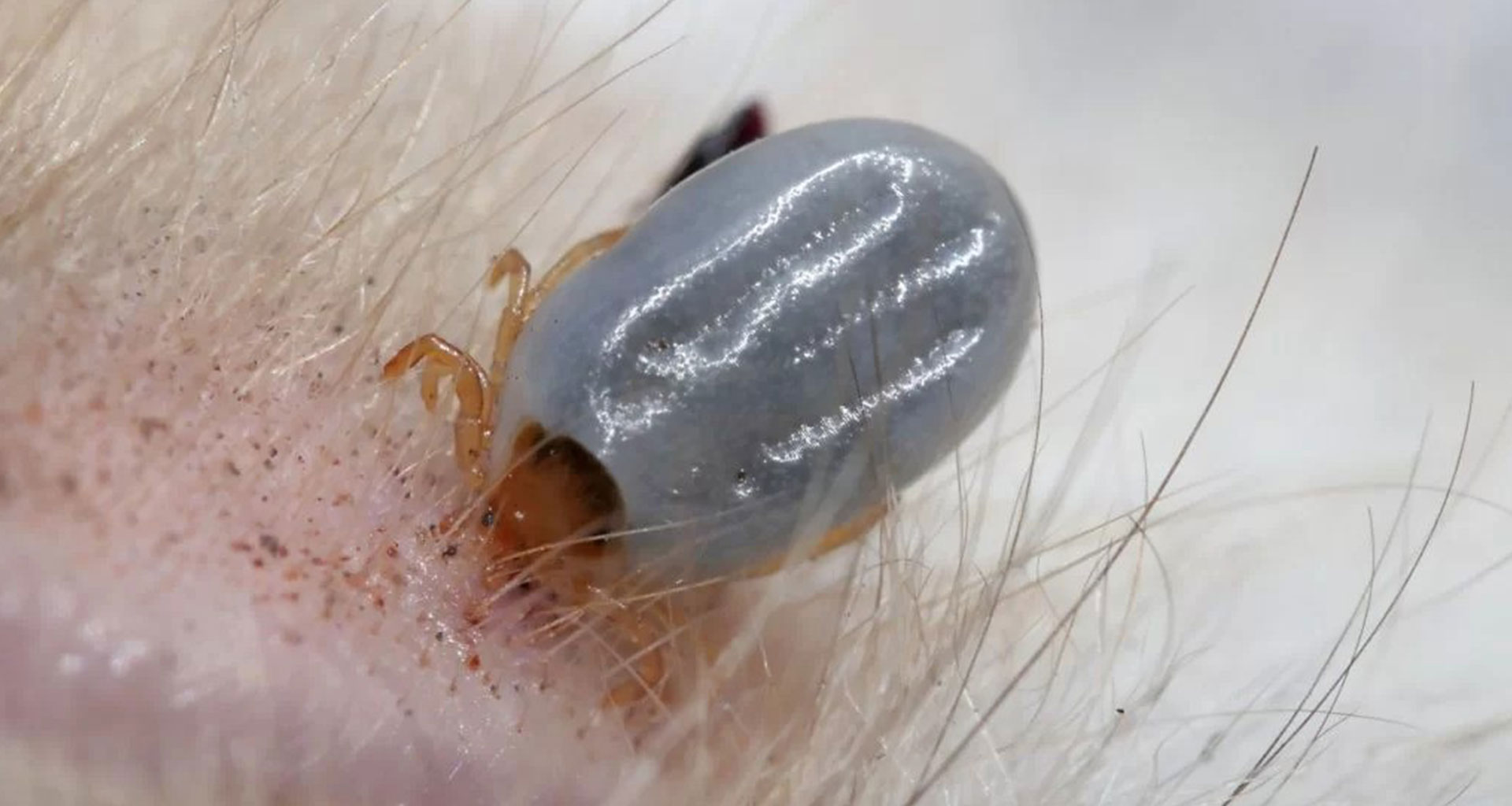Why do ticks cause paralysis?
Australian paralysis ticks, Ixodes Holocyclus are small grey ticks that live on native and domestic animals along the eastern Australian coastal strip. Most native animals are to a certain extent immune to the toxins but when the ticks attach on to a domestic animal they inject a neurotoxin that causes progressive paralysis leading to respiratory depression and ultimately death.
Dogs and cats can present with several different signs such as:
- Wobbly back legs
- Reluctance to jump or walk
- Weakness climbing stairs
- Coughing or grunting
- Retching, regurgitating or vomiting
- Change in bark or meow
- Difficult or fast breathing
- Complete paralysis or collapse
The dog or cat may have the tick on them for up to three weeks before it is fully engorged and begins injecting its toxin. Hotter weather will cause faster engorgement and thus quicker paralysis. Sometimes, if the tick is pulled off early and the animal is exhibiting no symptoms of paralysis, they may not require treatment. However, if they have any of the symptoms listed above they require immediate veterinary attention. The sooner the animal receives treatment, the better the prognosis.
Nymph forms of the tick can also attach to dogs and cats and if in high enough numbers can cause extreme agitation and discomfort. These animals can be treated with a tick spray, antihistamines and sometimes cortisone injections.
What does initial treatment involved?
- Remove and kill all ticks
The ticks must be removed to stop further toxin absorption. If done at home, make sure you show the vet to confirm what type it is. Your animal may be clipped to search for other ticks. Your pet will also be sprayed with Frontline (fipronil) or Permoxin (dogs only) to ensure any missed ticks are dead. - Sedation
If your animal is stressed, we may give them some sedation to allow treatment. This may be required throughout their whole stay in hospital as stress can exacerbate symptoms. - Tick Antiserum
All animals exhibiting tick paralysis symptoms must receive antiserum. This is usually administered slowly intravenously. As per any antiserum, there is a risk of an anaphylactic reaction which may prove rapidly fatal. The chances of such a reaction are significantly increased if your animal has received the antiserum previously so it is important to tell the vet if this is the case. - Fasting
Tick animals are not given any food until we are sure they can swallow it properly. If they are fed too soon this can lead to obstructions and aspiration pneumonia. Hydration is maintained via intravenous fluids and we watch very carefully to make sure they are receiving their daily nutritional requirements. It is quite common for tick patients to be fasted for up to a week. - Time
The time it takes an animal to recover from tick paralysis is extremely variable. Some animals can go home the next day whilst others remain in hospital for over a week. It is important they are eating and drinking without difficulty before going home.
What complications can occur?
Regurgitation and aspiration pneumonia
Because the toxin can affect the muscles of the food pipe (oesophagus) it can become flaccid and dilated. The throat muscles can also be affected, and you may have observed the vet checking the ‘gag reflex’ which is the animal’s ability to swallow. If this is reduced and they are regurgitating they are at high risk of aspiration pneumonia.
Aspiration pneumonia occurs when saliva and/or food material ends up going down the wind pipe (trachea) into the lungs causing an infection. This can be fatal and further exacerbates breathing difficulties. Diagnosis is made from x-rays and treatment involves intravenous antibiotics, nebulisation, coupage and sometimes oxygen supplementation.
Respiratory depression
The tick toxin can cause a decrease in respiration rate and closure of the vocal folds during expiration leading to difficulty breathing and ultimately ‘hypoxemia’ which is a decreased amount of oxygen in the blood. Paralysis of the diaphragm and chest muscles further reduces the ability to breath. Animals that are struggling to breathe require extra support such as oxygen therapy and in severe cases must be intubated and possibly ventilated.
The intubated patient
If an animal is struggling to breathe, regurgitating or has aspiration pneumonia they may require intubation. This is when they are anaesthetised and a tube is placed down their trachea to help them breath and reduce aspiration. Sometimes they will also require oxygen supplementation via the tube. Intubated patients require intensive management with nurses checking on them at least every 5 minutes, 24 hours a day.
The ventilated patient
Intubated patients are monitored closely and regular blood checks tell us if they have sufficient oxygen in their blood stream. If they are struggling, their blood becomes acidotic and they require breathing assistance. This is performed via a ventilation machine which breathes for the animal whilst they are anaesthetized. Ventilated patients require constant monitoring so special nurses are employed to sit with them 24 hours a day. These patients often also have aspiration pneumonia.
Costs involved
Our clinic has direct access to an emergency veterinary centre which has well-trained vets on duty 24 hours a day providing each animal with constant, around-the-clock care and costs reflect this. The costs vary greatly depending on the initial presentation of the animal and the complications that occur. Generally, tick paralysis starts from $300. If your animal is admitted with tick paralysis it is good to be aware of the costs that may be involved and make sure your vet is on the same page as to what your financial limits are. Unfortunately, the severe cases can be extremely costly due the intensive care required. This is a good reason to bring your animal in as soon as they are showing signs as this will likely keep your costs to a minimum. A deposit may be required at the time of admit and the full account will need to be paid before your animal is discharged.
- Aftercare
- Strict rest for 3-5 days (no walks except for toileting)
- Gradual return to exercise – nothing strenuous for 3 weeks (the tick toxin can affect heart rhythm for up to 3 weeks)
- Avoid overheating (in car, hot weather, exercise) for 3 weeks
- Observe urination and advise vet if straining, narrow stream, incontinence or reduced urination occur
- Look out for recurrence of tick paralysis signs and call vet if this occurs.
- Apply tick prevention again a fortnight from discharge from hospital and throughout the entire year.
- Suitable preventives for dogs are:
- Our recommendation is a Bravecto chew that is given every 3 months or a Bravecto spot on that lasts 6 months which provides very thorough coverage of flea and tick prevention.
- Advantix spot on applied every 2 weeks (not within 48hrs of a bath)
- Seresto tick collar
- Nexgard is another good monthly chew that provides tick and flea prevention.
- Suitable preventive for cats:
- A suitable spot-on applied every 3 months (or 2 months for Bravecto Plus).
- No products are guaranteed to prevent tick paralysis so you must check your pet’s skin each day for ticks. This is done by running your fingertips over the pet’s skin, feeling for lumps, as well as visual checking. Most ticks are found on the head, neck and ears but you must check the skin all over.
- Many people have their pet’s coats clipped short in the warmer months to aid tick-searching the coat.
- There is no immunity provided from tick envenomation.


